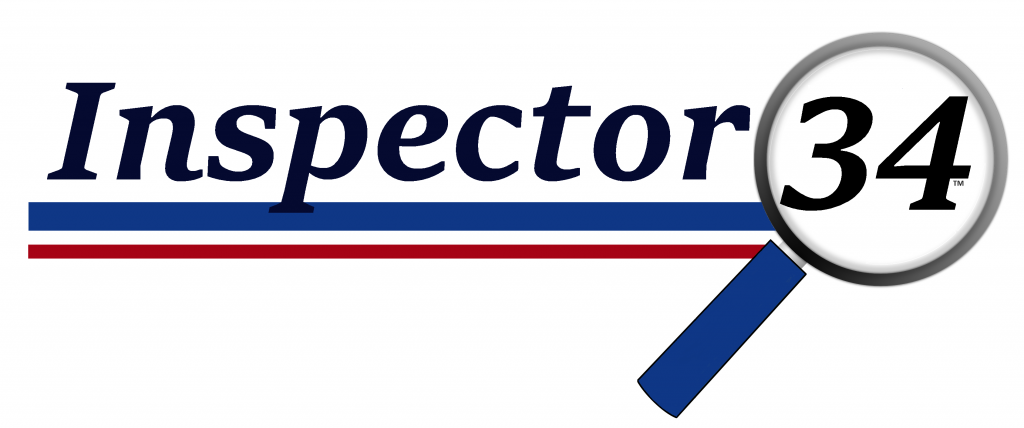
- INSPECTION PURPOSE AND SCOPE
1.1 The purpose of these Standards of Practice (Standards) is to establish a uniform standard for inspectors performing residential swimming pool/spa inspections.
1.2 Inspections performed in accordance with these Standards:
A. provide the client with additional objective information about the condition of inspected components at the time of the inspection;
B. are conducted by an inspection generalist, not by a technical specialist;
C. are general and do not include or confirm conformity with:
- building codes and other governmental laws and regulations,
- manufacturer’s installation instructions,
- construction plans, drawings, and specifications;
- permitting authorities;
D. do not provide a warranty or guarantee regarding the condition of the inspected
swimming pools/spas;
E. do not identify and report all possible safety issues regarding the installation, operation, maintenance, and use of inspected swimming pools/spas.
1.3 These Standards do not limit inspectors from:
A. including other services or components in addition to those required in these Standards;
B. excluding components from the inspection if requested by the client.
1.4 Inspectors who perform inspections in accordance with these Standards shall adhere to the LSBHI Code of Ethics.
1.5 These Standards apply only to swimming pools/spas located on property containing a one or two- family residential structure. These standards do not apply to swimming pools/spas used for commercial or competitive uses.
- INSPECTION AND REPORT
2.1 Inspectors shall inspect readily accessible, visually observable, installed components designated in these Standards.
2.2 Inspectors shall issue a written report that:
A. identifies components that, in the professional judgment of the inspector, are not functioning properly, significantly deficient or unsafe;
B. provides the reasoning or explanation as to the nature of the deficiencies reported in 2.2.A, that are not self-evident;
C. recommends correction, further evaluation, or monitoring of components identified in 2.2.A;
D. identifies components designated for inspection in these Standards that were present during the inspection but were not inspected and the reason(s) why they were not inspected;
- SWIMMING POOL AND SPA INSPECTION
3.1 Inspectors shall:
A. inspect:
- the visible parts of interior finish materials,
- the visible parts of decks, steps inside the swimming pool/spa shell, and
coping, - the visible parts of pumps, motors, blowers, skimmer, filters, drains, heaters,
automatic safety controls, gauges, visible piping and valves, conduit, - cross connections in the water supply system,
- external bonding of the pump motors, blowers, heaters and other
components that are required to be bonded, - operation of readily accessible lights, ground fault circuit interrupters, electrical
components, and timer assemblies that are related to the pool or spa, - the visible parts of permanently installed handrails and ladders,
- for the presence of safety barriers and alarms,
- for the presence of entrapment prevention components,
- vegetation, grading, surface drainage, and retaining walls that are likely to adversely affect the swimming pool or spa;
B. describe:
- type of swimming pool/spa,
- interior finish materials,
- type of filter,
- types of safety barriers,
- type of filtration system (if present),
- energy source for heater (if present);
C. operate the systems using normal operating controls;
D. open readily openable access panels provided for homeowner maintenance.
3.2 Inspectors are not required to:
A. test, operate, or evaluate components when weather conditions or other circumstances may cause equipment damage;
B. test, operate, or evaluate automatic safety controls and manual or automatic valves;
C. touch swimming pool/spa water to examine the structure, components, and features, including their composition and quality;
D. test, operate, or evaluate electric resistance heaters;
E. determine structural integrity;
F. inspect any equipment or component that is shut down or that is not responding to normal operating controls, including conditions caused by the absence of a required energy source such as electricity or gas;
G. inspect, test, operate, or evaluate: low voltage or electronic controls, water chemistry or clarity, out-of-level conditions, presence or absence of bacteria/algae, backwash functions, aerators, automatic cleaning systems, automatic water fill systems, water treatment systems, chemical dispensers, thermostats or their calibration, heating elements, heat exchangers, solar and other alternative energy heating systems, water features, covers and related components, accessories, leaks in shell, underground components, temporary safety barriers and alarms, stray voltage, the interior of filters including filter cartridges, or the calibration of timers;
H. inspect, test, operate, or evaluate diving and jump boards, slides, play equipment and similar components; and the suitability of the pool for the use of such components and for activities such as diving; and
I. determine the adequacy of system or component design, structural components, equipment and component compatibility, flow rates, high- or low-pressure conditions, filters, heaters, safety barriers and alarms, and entrapment prevention components.
J. Inspect any systems or components of the swimming pool/spa that are not permanently installed;
- GENERAL LIMITATIONS AND EXCLUSIONS
4.1 General Limitations
A. Inspectors are not required to perform any action or make any determination not specifically required in these Standards.
B. Inspections performed in accordance with these Standards are not:
- numerically complete, and
- required to identify or to report concealed conditions, latent defects, and consequential damages, and cosmetic issues.
4.2 General Exclusions
A. Inspectors are not required to determine:
- condition of components that are not installed or that are not visible and
readily accessible; - strength, adequacy, effectiveness, or efficiency of any component, including
structural components; - methods, materials, or costs of corrections;
- future conditions including, but not limited to, component failure and the life expectancy of components;
- the suitability of a swimming pool/spa or of a component for any specialized use;
- the presence or absence of any environmental hazards including, but not limited to, toxins, allergens carcinogens, electromagnetic radiation, noise, radioactive substances, and contaminants in soil, water, or air;
- the presence or absence of potentially hazardous or damaging plants and animals including, but not limited to, wood destroying organisms and organisms or diseases harmful to humans including molds and mold-like substances;
- operating costs of components;
- acoustical properties of any component;
- soil conditions relating to geotechnical or hydrologic specialties;
- causes of or reasons for the condition of components identified in 2.2.A;
- the safety of using the swimming pool/spa or any component;
- the risks or benefits of adding new components and of modifying existing
components; - whether the swimming pool/spa or any component is free from leakage of any kind;
- whether any item, material, condition, or component is subject to recall, controversy, litigation, products liability or other adverse claim or condition;
- the adequacy of operation, maintenance, and use of the safety barrier;
- the adequacy of operation, maintenance, and use of the swimming pool/spa
and of any component.
B. Inspectors are not required to:
- perform any act or service contrary to law or regulation;
- perform architectural, engineering, or surveying services or to confirm or evaluate such services performed by others;
- perform any trade or any professional service other than as required in these Standards;
- offer or provide warranties or guarantees of any kind;
- perform any procedure or operation or enter any area that may, in the opinion of the inspector, be dangerous to the inspector or to other persons, or that may cause damage to the property or to components;
- move personal property, equipment, plants, soil, snow, ice, or debris;
- inspect installed decorative items;
- inspect component interiors that are not readily accessible; and
- dismantle any component, except as explicitly required by these Standards.
GLOSSARY OF ITALICIZED TERMS
Alarm: See safety barrier
Automatic safety controls: Devices designed and installed to protect components from unsafe conditions
Client: A person who hires an inspector to perform an inspection in accordance with these Standards
Component: A primary part of a functionally related group that works together as a system, not including ancillary parts, such as signage and depth markers, that do not contribute to the intended function of the system
Coping: The decorative material around the perimeter above a swimming pool/spa, usually located just above the tile
Cosmetic issues: Defects that are superficial and that do not significantly affect a component’s ability to function properly
Cross connection: Any connection between two otherwise separate piping systems whereby there may be a flow from one system to another
Decorative: Ornamental; not required for the proper operation of the swimming pool/spa components
Describe: To identify (in writing) a component by its type or by other distinguishing characteristics
Dismantle: To take apart or remove any component, device, or equipment that is bolted, screwed, or fastened by other means and that a homeowner would not take apart or remove in the course of normal household maintenance
Electronic controls: Digital, computerized or solid-state equipment operation management devices
Entrapment prevention component: A component, such as a suction outlet cover, installed within the swimming pool/spa water circulation system that helps prevent a person from being held underwater at a suction outlet
Further evaluation: Examination and analysis by a qualified professional, tradesman, or service technician using techniques and/or expertise that are beyond the scope of inspections performed in accordance with these Standards
Inspect: To visually examine components in accordance with these Standards, using normal operating controls and opening readily openable access panels
Inspector: A person who is hired by a client to inspect a swimming pool/spa in accordance with these Standards
Installed: A component that is connected or set in position and prepared for use
Normal operating controls: Devices such as thermostats and switches intended to be operated by the homeowner
Numerically complete: An inspection that inspects every individual occurrence of a component
Readily accessible: A component that is located where access will not involve risk to persons or property, and that is visible without: (1) moving matter of any kind, and (2) using tools, and (3) using a ladder taller than twelve feet
Readily openable access panel: A panel provided for homeowner inspection and maintenance that is readily accessible, within normal reach, can be removed by one person, and is not sealed in place
Safety: Freedom from danger, risk, or injury
Safety barrier: a component, such as a fence or a door or a window alarm, that helps restrict access to a
swimming pool/spa
Shut down: A state in which a system or component cannot be operated by normal operating controls
Structural component: A component that supports non-variable forces or weights (dead loads) and variable forces or weights (live loads)
Swimming pool/spa: A contained body of water eighteen inches or more in depth at any point and intended for swimming or immersion
Technical specialist: A person who, by reason of training, education, and experience, has expertise in a specific trade or profession that is beyond that of an inspector, and who might, by reason of this expertise, or by the use of specialized tools, instruments, measurements, testing, calculations, or other means discover issues not discovered by an inspector
Unsafe: A condition in a readily accessible, installed system or component that, in the professional judgment of the inspector, presents a significant risk of bodily injury during normal, day-to-day use. The risk may be due to damage, deterioration, improper installation, or a change in accepted swimming pool/spa construction methods.
